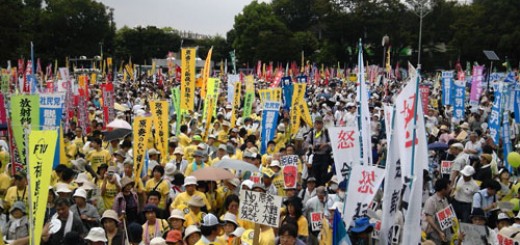CNIC Survey on attitudes towards the Rokkasho Reprocessing Plant in Aomori and Iwate Prefectures
The Rokkasho Reprocessing Plant (RRP) is designed to extract plutonium from spent nuclear fuel and has been under construction for nearly 30 years. It is a key part of the Japanese government’s nuclear fuel cycle policy, but serious concerns have been expressed both internationally and domestically regarding proliferation risks, safety, environmental impact and economics. In September and October 2020, CNIC conducted a survey to find out how people in Aomori Prefecture and neighboring Iwate Prefecture feel about the RRP in Rokkasho Village, northern Aomori, which is planned to commence operations next year. The results of the survey were presented at an online press conference on April 21. Here is a summary of the main findings of the survey and discussions at the press conference.
Outline of the survey:
Period when carried out: 1 September 2020 – 31 October 2020
Sample population:
- In Aomori Prefecture – Prefectural and Municipal Legislative Assembly (Council) members, various industrial groups including farming and fishery groups, retailers and other service industry groups.
No. of questionnaires posted: 1166
No. of responses: 209
- In Iwate Prefecture – Through the cooperation of a local citizen group which works on protecting the marine environment, we were able to connect with larger numbers of fishery industry workers and members of cooperatives.
No. of questionnaires posted: 4000
No. of responses: 547
Survey results:
- Regarding the planned commencement of operations of RRP:
In Aomori Prefecture, 42% were in favor, 20% were against and 38% responded ‘don’t know.’
In Iwate Prefecture, 4% were in favor, 71% were against and 25% responded ‘don’t know.’
- Regarding the RRP management policy to release into the ocean up to 10 times the amount of tritium presently stored in tanks at the Fukushima Daiichi NPP every year:
In both Aomori and Iwate, 33% were well aware or knew about this policy to some extent and 67% didn’t know about it at all or very well.
- Regarding whether the government and operator (JNFL) should have explained in more detail the fact that tritium would be released:
Over 90% of respondents in both prefectures agreed or agreed to some extent.
- Regarding the release of tritium and other radionuclides into the sea and air, whether the government should have set up investigative committees and held public hearings as they did in the case of the release of contaminated water in Fukushima:
Over 90% of respondents in both prefectures agreed or agreed to some extent.
- Regarding whether RRP operations should not be commenced unless there is agreement from the people concerned about the release of radionuclides:
78% of respondents in Aomori and 96% of respondents in Iwate agreed or agreed to some extent.
Comments on the results
The national government has repeatedly stated the importance of gaining public understanding regarding its nuclear fuel cycle policy. JNFL has also stated that gaining local understanding is a ‘precondition’ to commencing operations. However, from the results of this survey we can clearly see that the understanding of even people in Aomori Prefecture, where RRP is situated, cannot be considered adequate and in neighboring Iwate Prefecture there is overwhelming opposition. The survey also shows that in both Aomori and Iwate, the majority of respondents were unaware or not very aware of the discharge of radionuclides during normal operation of RRP. Construction of RRP began in 1993 but in nearly 30 years since then, it seems that public understanding has not been achieved.
Cross referencing the data gained from this survey shows that even respondents who were in favor of commencing operation of RRP still thought that community consensus should be reached before operations begin. At the very least the government and JNFL should, at the earliest opportunity, hold public hearings and deliberation councils to explain the routine release of radionuclides into the environment that operating RRP entails.
Questions asked at the Press Conference
- Why did you choose Aomori and Iwate Prefectures? How did you select the respondents?
As the ocean and the atmosphere are connected, obviously neighboring prefectures will also be majorly impacted by RRP through the radioactive substances that will be released if it operates, so we thought it was important to find out how people felt about RRP in Iwate. We would also have like to include Hokkaido but that was beyond our scope this time. The respondents from each of the prefectures were quite different because in Iwate we were able to cooperate with another group mainly connected with fishing and other cooperatives, so the respondents reflected this, but in Aomori the sample population was smaller and we selected more public office holders, so it’s difficult to do simple comparisons of the data. Nevertheless, the findings show that in each prefecture there is significant concern and a major need for more information regarding RRP.
- How are you going to use this data?
We will be presenting it to the relevant government authorities and JNFL in order to urge them to fulfill their stated responsibility to inform the public regarding operations of RRP. We will also be using this data in discussions we have with government representatives on the Strategic Energy Plan which is due for renewal this year.
*More complete data/graphs are available in Japanese at cnic.jp/38801

